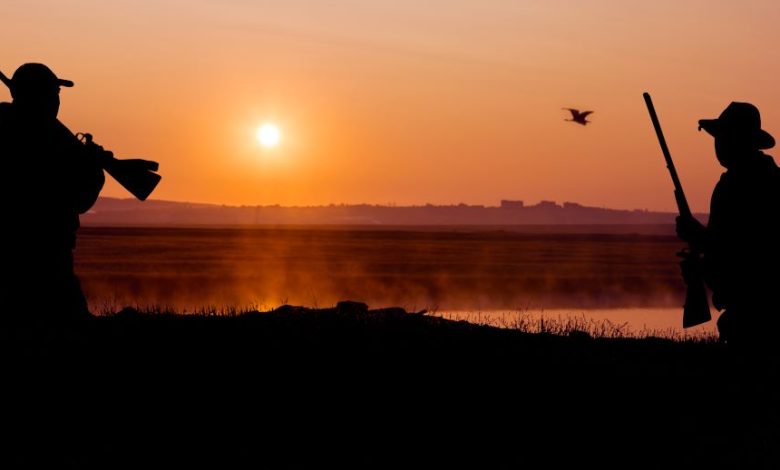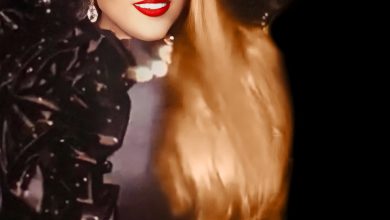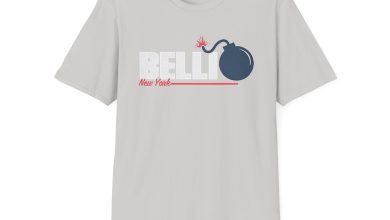Hunting Clothing

There are supporters of fierce militarism, there are (like me) inveterate retrophiles, and the truth, as always, is located in the middle.
Any hunting clothing has three functions:
1. Protects against environmental influences
2. Hides from unnecessary glances, disguises
3. Allows you to carry the equipment directly on you, unloads.
With this in mind, we can see two polar and multidirectional positions on this matter.
Minimalist, my favorite. Any clothes, as long as they are durable, comfortable, do not squeeze anything, and are quite discreet.
Hunting pants, shirt, sweater.
Everything else, related to bad weather and equipment, is put on, hung on top. A raincoat, a windbreaker, a belt with a knife and other necessities, and a jagdtash and a backpack for carrying everything else, including bivouac equipment.
Hunting camouflage clothing is done locally, from natural materials or brought with you.
I threw off my equipment and now I’m no longer a hunter, but.. It’s just some passing comrade.
The second extreme is a set of hunting camouflage clothing (for each season and terrain), cargo clothing, fully protected from bad weather, with integrated and reinforced pockets and containers for equipment.
Sometimes, even including an unloading vest.
All other options fall between these two poles. And each has its pros and cons. And it can be the same thing.
Cargo pockets.
Pros: Everything you need is always on you, with you, under the right hand.
Cons: everything unnecessary is also always with you, cumbersome and interferes with everyday life, if we are talking about parking. Do you want to put everything out of your pockets? You run the risk of forgetting to put or post something.
Hunting camouflage clothing. There are many opinions on this difficult matter, but I will take a chance.
According to my observations, a man in hunting camouflage clothing, in dense vegetation, cannot be seen from twenty paces. In the same way, you can’t see any other person in ordinary dim clothes. If they both don’t move.
I will say even more. A man in camouflage with orange armbands is also not visible if he has gone deep enough into some bushes and trees.
There has been a lot of talk about the sight of animals and birds, and today the generally accepted view is as follows. What are the colors? Red, orange, yellow, green, light blue, blue, purple.
Every hunter wants to know where the pheasant sits, remember? That’s what matters. To put it simply: animals mostly see in monochrome, in the black and white spectrum.
Birds too, but a little better in the ultraviolet spectrum – “where the pheasant sits”, and very little see the contrast in “every hunter wants”. From this, in general, we can deduce that camouflage, in hunting, is redundant and unnecessary. Gray, green, brown and intermediate colors are enough. This, by the way, is what hacks are. Someone will immediately start a hurdy-gurdy about blurring the silhouette, but we will classify these shouts as premature and ignore them. Why?
Because the silhouette of a motionless person, precisely as the silhouette of a person, is perceived by a person. With your human brain. Moose, thank goodness, without him.
And many people, to be honest, too.
And while we’re on the subject of stealth, let’s focus on something else. Movement.
The main camouflage is immobility.
Most non-carnivorous animals, and almost all birds, have non-binocular vision.
They need a huge viewing angle.
Very much needed.
And you have to turn your head quickly.
They can’t look deeper.
It’s a little easier for a wild boar.
A predator can.
That’s one.
Two. Hence, for them, we may assume, the motions are divided into vertical and horizontal.
Three. There are a lot of vertical movements in nature – Mother Gravity constantly takes care of this. Something is constantly falling. Characteristically, it falls from top to bottom, not sideways.
Therefore, horizontal movements are read by absolutely everyone as someone’s intentions. In a hundred cases out of a hundred, they are hostile. Hence, a simple conclusion: if you really need to, try to move very slowly and be sure to “bayonet” to the animal. Avoiding parasitic horizontal movements. For an animal incapable of understanding depth and distance, you will increase in size rather than getting closer. Although some people will be scared off if they go too far.
Another disadvantage of hunting camouflage, in addition to its redundancy (the issue is more than debatable and lies rather in the economic plane), is that it clearly and unambiguously betrays to all people your intentions – to hide. This raises questions. And it’s good if you have the answers. But a person in “civilian” is visually uninformative, the eye does not cling to him.
And the most important thing. In about a day or two, any of your clothes will turn into hunting camouflage, randomly covered with stains: dirt, burdock, salt stains from sweat, charcoal smears, red clay stains on your knees – isn’t it flexarn? So – ninada.
Now about the covering and other breathable properties.
Yes, the membrane (competently selected for the conditions – this is important!) really works. But. How many cycles will it endure before it gets clogged with sweat, dirt, baked by the heat of a campfire or ultraviolet radiation from the sun? Cloth and cotton can simply be washed/dried and it works again, but the membrane? What if it’s shoes?
And so, according to the eternal dialectical materialism, the transformation of virtue into defect. I’m not an opponent of progress, don’t think about it, I’m a supporter of a competent approach.
If the way out is short and comfortable, use high-tech products, if you have to wander around the “middle of the nowhere”, use renewable resources.
Equip yourself competently, and may he be with you. And no, it was already somewhere..
Live by your mind, there’s a cho! And all my respects!









